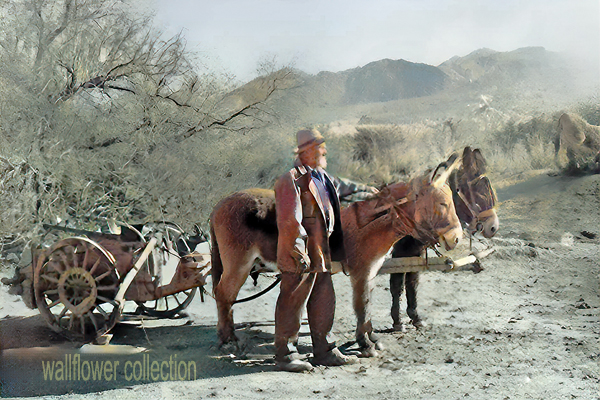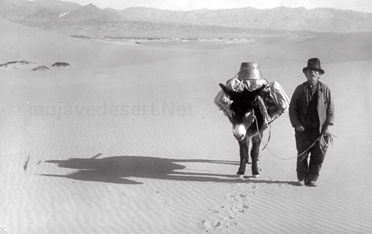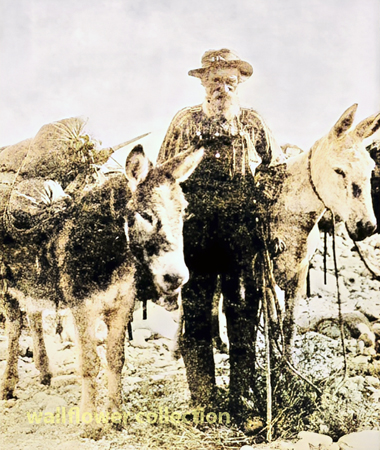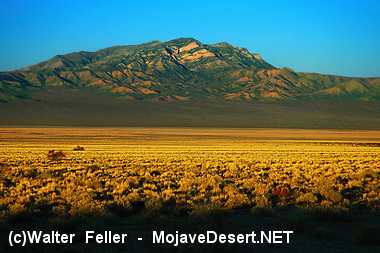Prospectors & Miners

The gold fields of Northern California began drying up. Prospectors came back to
the desert to find their fortunes. Once the prospectors made their discovery, they
would become miners and work the claim or sell it off and begin the search again.
Promoters sought money and investors would provide it. Men would overrun an area and
the cycle of
gold mines and mining towns would
begin.
During the mid-19th century, mining in all areas of the Mojave created boom towns with colorful names and
characters. On Christmas Day in 1860, for example, the first producing Mojave mine, named “Christmas Gift,”
was opened in Death Valley. As the mining boom continued, borax—“the white gold of the desert”—was discovered;
it has been mined profitably in the Death Valley area since. During the 1870s, the Clark Mountain Mining
district was established and with it the town of Ivanpah, which at the time was the only American community
of any size in the eastern portion of the Mojave.
Gold was discovered in El Dorado Canyon in the late 19th century, where a single mine ultimately
produced $1.7 million in gold. Small prospectors, however, generally made very little money, the biggest
problem being the costs of transporting supplies to such remote locations. “Boom-or-bust” mining was the
usual approach: As soon as a strike played out, miners moved on, leaving
ghost towns
in their wake.
<< Previous -
Next >>
The Prospector
The prospector is one of the unique, one of the most exceptional and most worthy of all those remarkable characters who have exploited and led the way for the development of the west. The west owes him a debt of gratitude which the west can never pay. Always poor, often homeless, self-reliant, hopeful, generous and brave, he has been the solitary explorer of desert and mountain vastness. He is the one who unlocked from its imprisoned silence the countless millions of what is now the world's wealth. He penetrates the most remote and inaccessible regions, defies hunger and storms alike, sleeps upon the mountain side or in improvised cabins, restlessly wanders and searches through weeks and months and years for nature's hidden and hoarded treasures. Often-times his search ends in poverty and distress and failure, sometimes in success. Without the prospector - this poor isolated wanderer - the great mining centers of the west would not exist. Without his uneasy, never-tiring efforts, millions of dollars now on their way to minister to the happiness and comfort of the country would never have been poured into the channels of business and commerce.(Excerpt taken from "100 Years of Real Living" by the Bishop Chamber of Commerce, 1961)
Also see:
Boomtown & Mining History
Ghost Towns
Gold Mines
Death Valley Ghost Towns
Mining in Death Valley
Prospectors
Pete Aguereberry
Shorty Harris
Jack Keane
Johnny Lang

Death Valley prospector Shorty Harris
Contents & Introduction
-
Paleo-Indians
Desert Indians
Spanish Explorers
American Explorers
Pioneers
Military
Prospectors & Miners
Ranchers
Railroads
Homesteaders
Route 66 & Hoover Dam
Modern Communities

Seeing the Elephant

Sunrise on Clark Mountain across the Ivanpah Valley